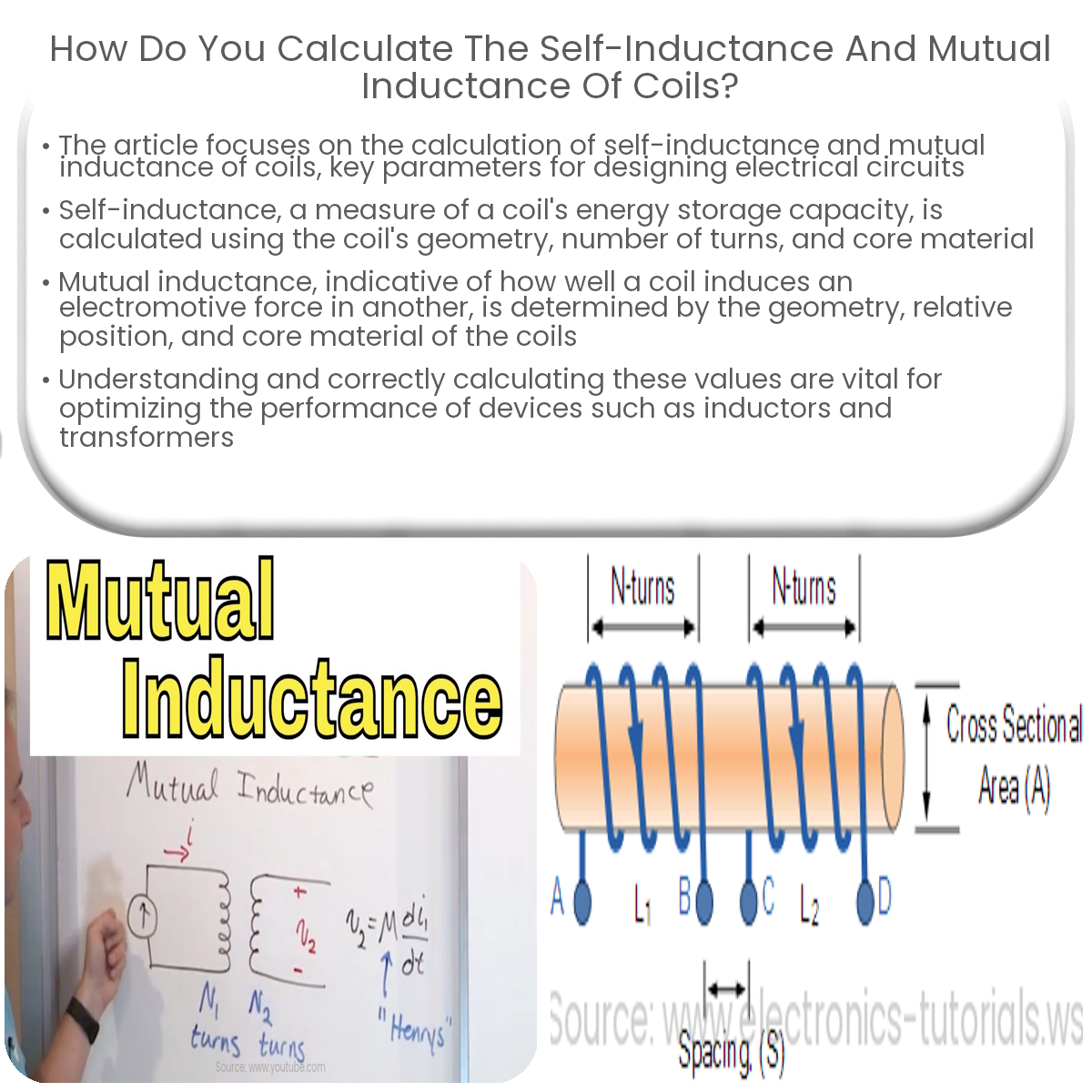Calculate self-inductance using L = (μ₀ * N² * A * l) / l and mutual inductance using M = k * √(L₁ * L₂), considering coil geometry and materials.
Calculating Self-Inductance and Mutual Inductance of Coils
Inductance is an essential parameter in the analysis and design of electrical circuits involving coils, such as inductors and transformers. This article discusses methods for calculating self-inductance and mutual inductance of coils.
Calculating Self-Inductance
Self-inductance (L) of a coil is a measure of its ability to store electrical energy as magnetic energy. It depends on factors such as the coil’s geometry, number of turns, and core material. For a solenoid or air-core coil, self-inductance can be calculated using the following formula:
L = (μ₀ * N² * A * l) / l
where:
- L = self-inductance (henries, H)
- μ₀ = permeability of free space (4π × 10-7 H/m)
- N = number of turns
- A = cross-sectional area of the coil (m²)
- l = length of the coil (m)
For coils with ferromagnetic cores, the inductance can be calculated by replacing μ₀ with the product of μ₀ and the relative permeability (μr) of the core material:
L = (μ₀ * μr * N² * A * l) / l
Calculating Mutual Inductance
Mutual inductance (M) is a measure of how effectively the magnetic field produced by one coil induces an electromotive force (EMF) in a neighboring coil. It depends on factors such as the geometry of the coils, their relative positions, and the core material. The mutual inductance can be calculated using the following formula:
M = k * √(L₁ * L₂)
where:
- M = mutual inductance (henries, H)
- k = coupling coefficient (dimensionless, 0 ≤ k ≤ 1)
- L₁ = self-inductance of coil 1 (H)
- L₂ = self-inductance of coil 2 (H)
The coupling coefficient (k) is a measure of the effectiveness of the magnetic coupling between the two coils. It depends on the geometry, spacing, and orientation of the coils. A value of k = 1 indicates perfect coupling, while a value of k = 0 indicates no coupling.
Conclusion
Calculating self-inductance and mutual inductance of coils is crucial for the design and analysis of electrical circuits involving inductors and transformers. By understanding the factors that influence inductance and employing the appropriate formulas, engineers can optimize the performance of these devices for various applications.


